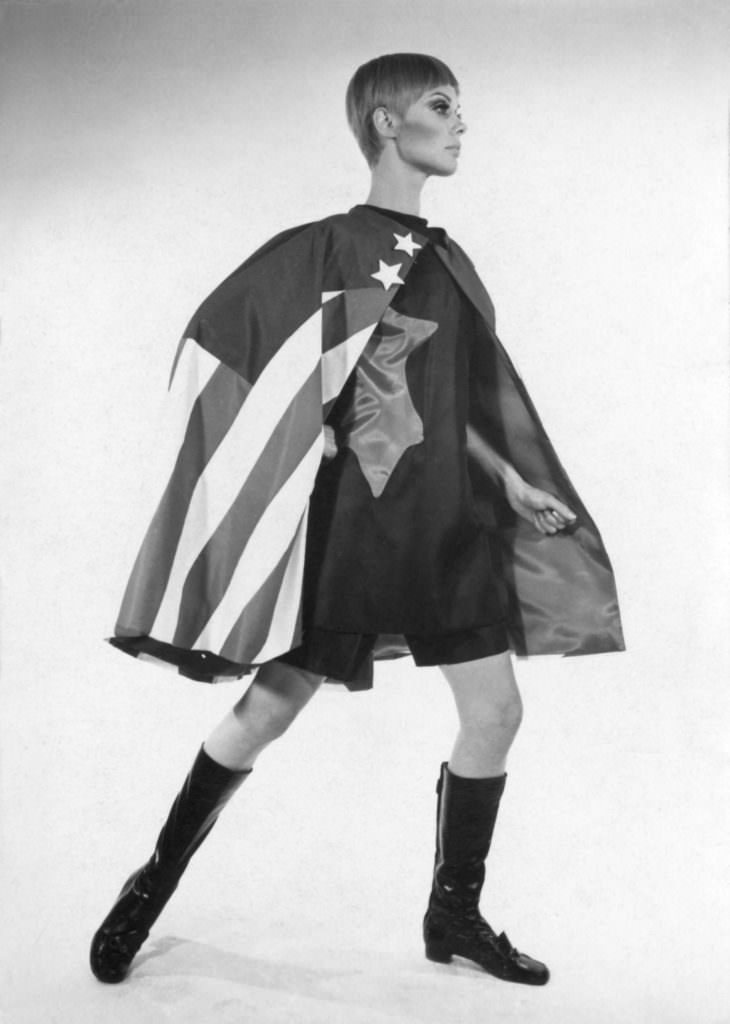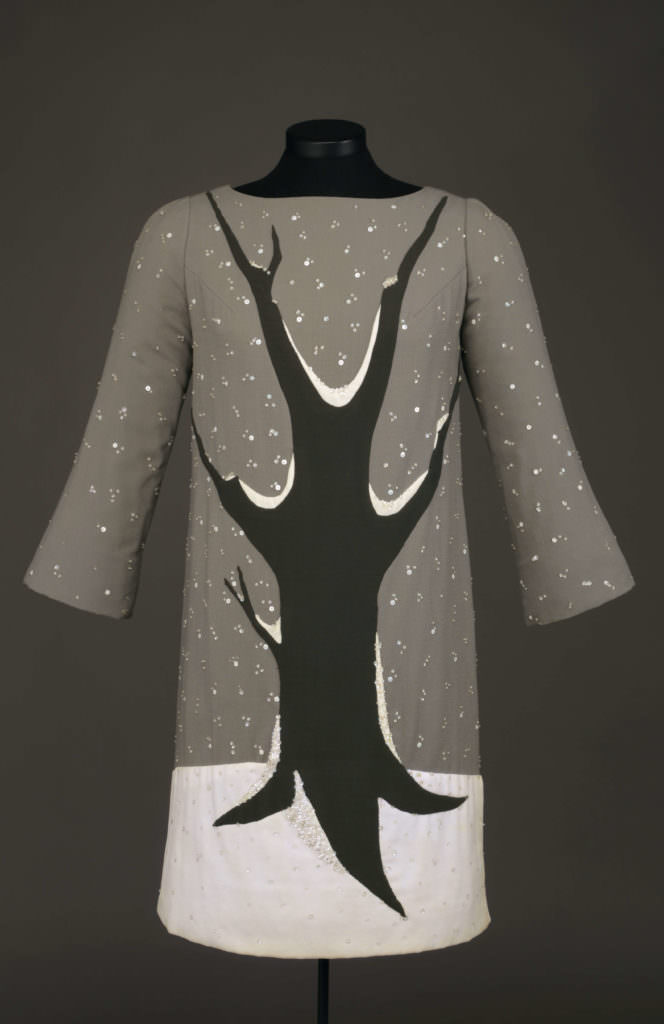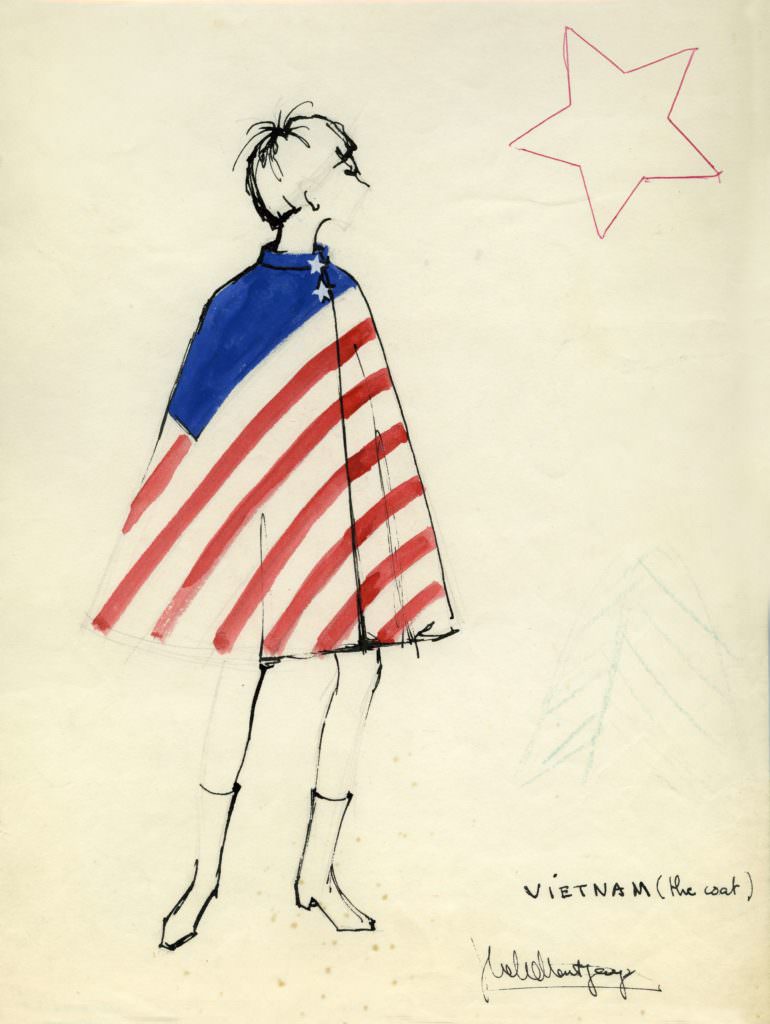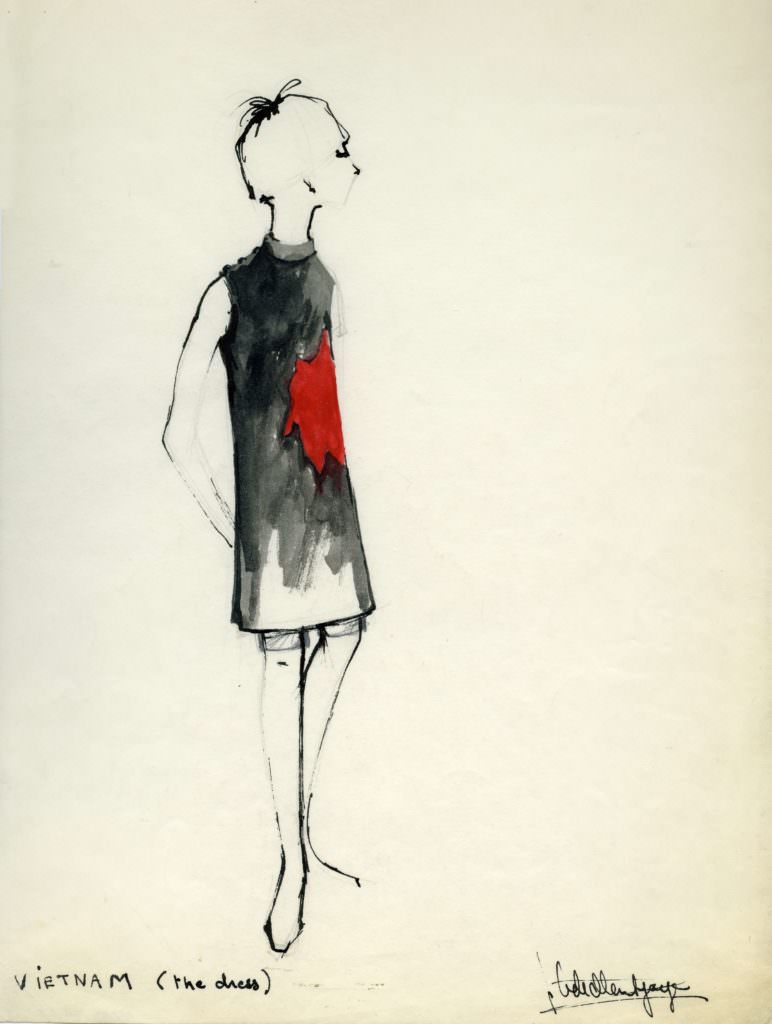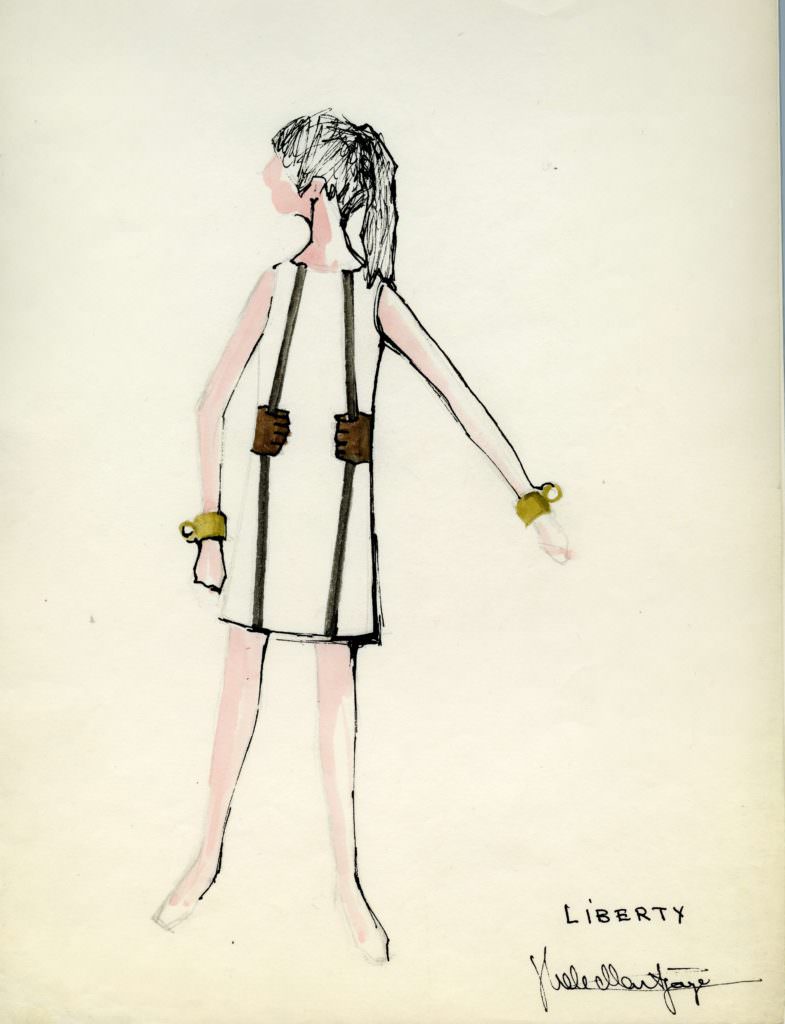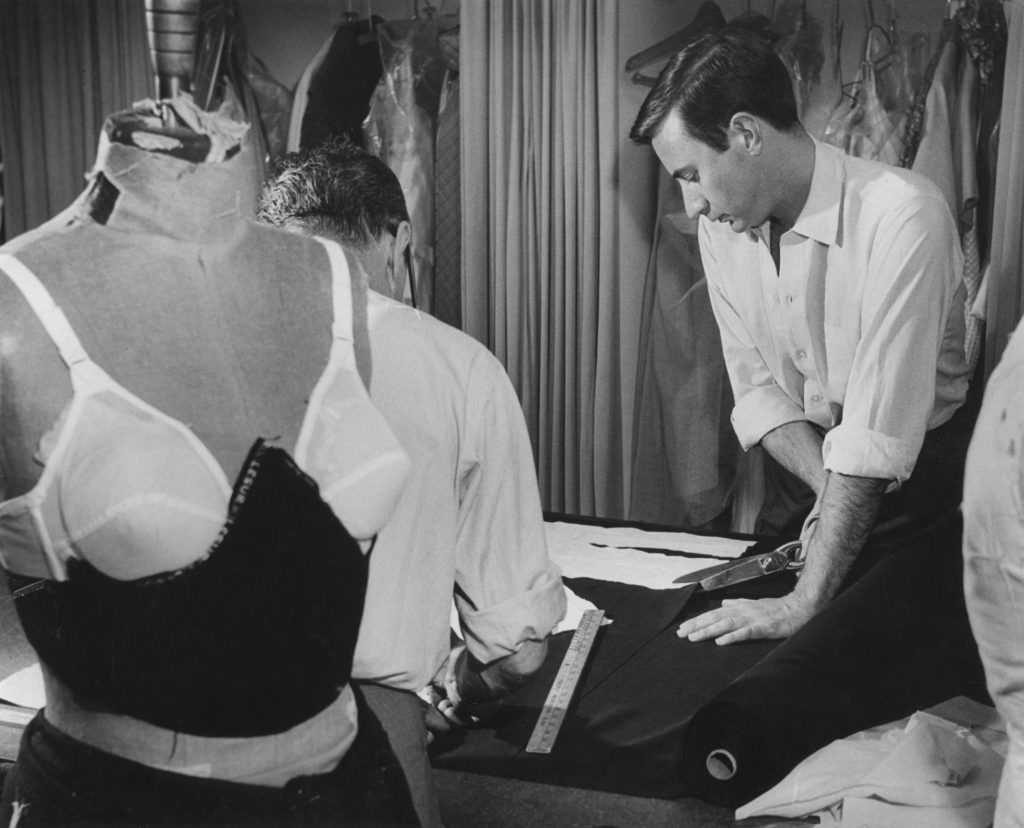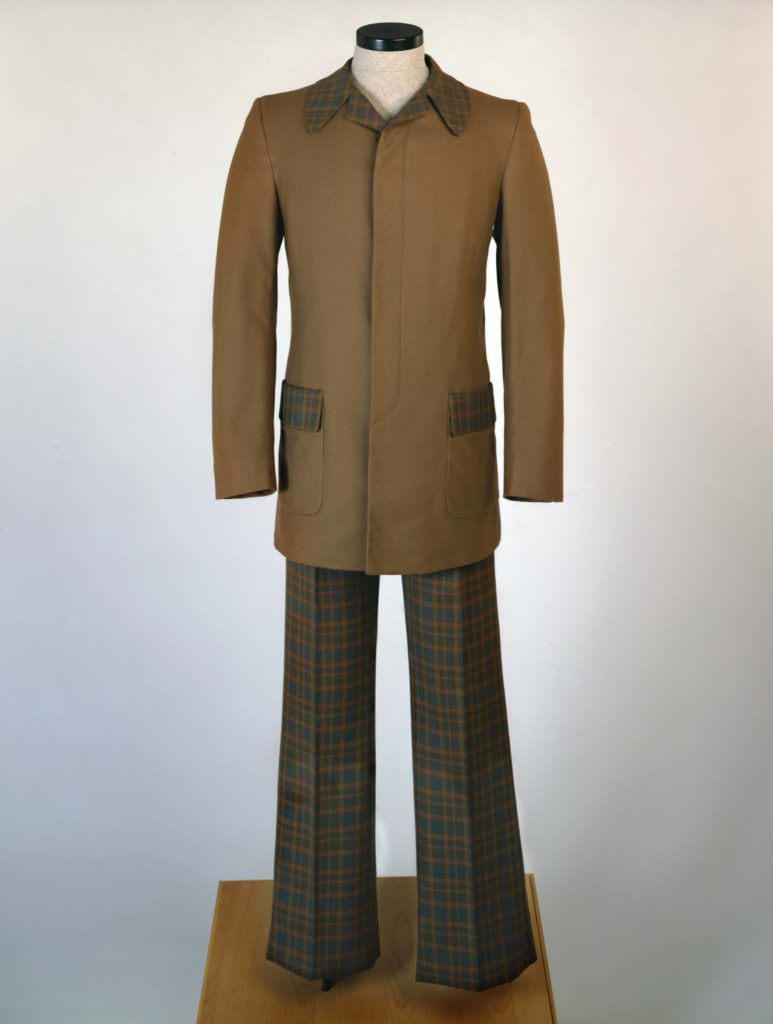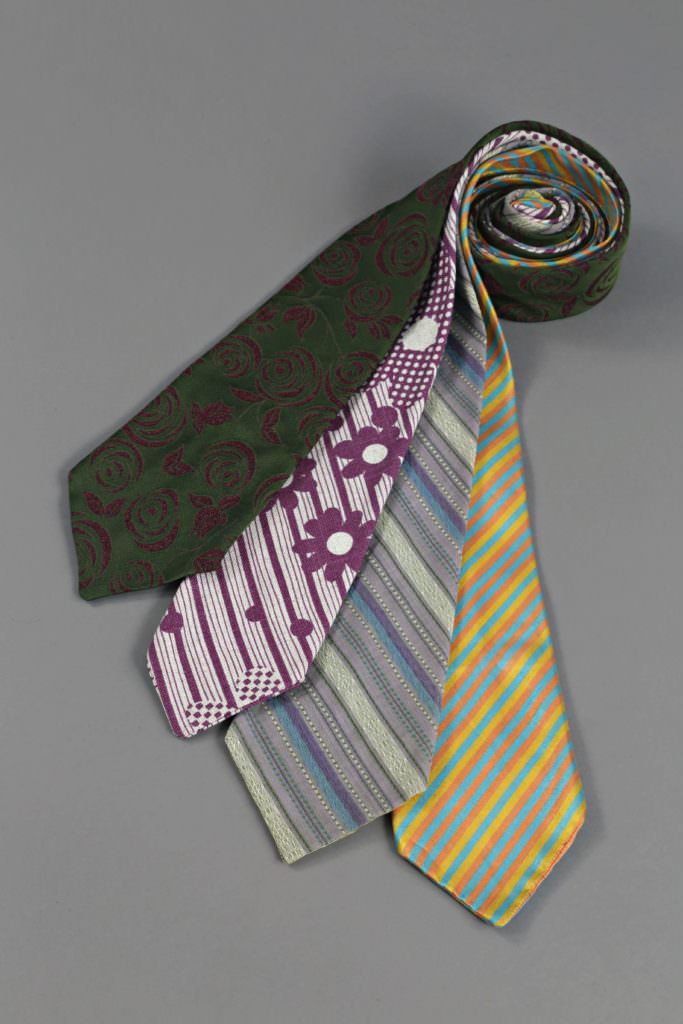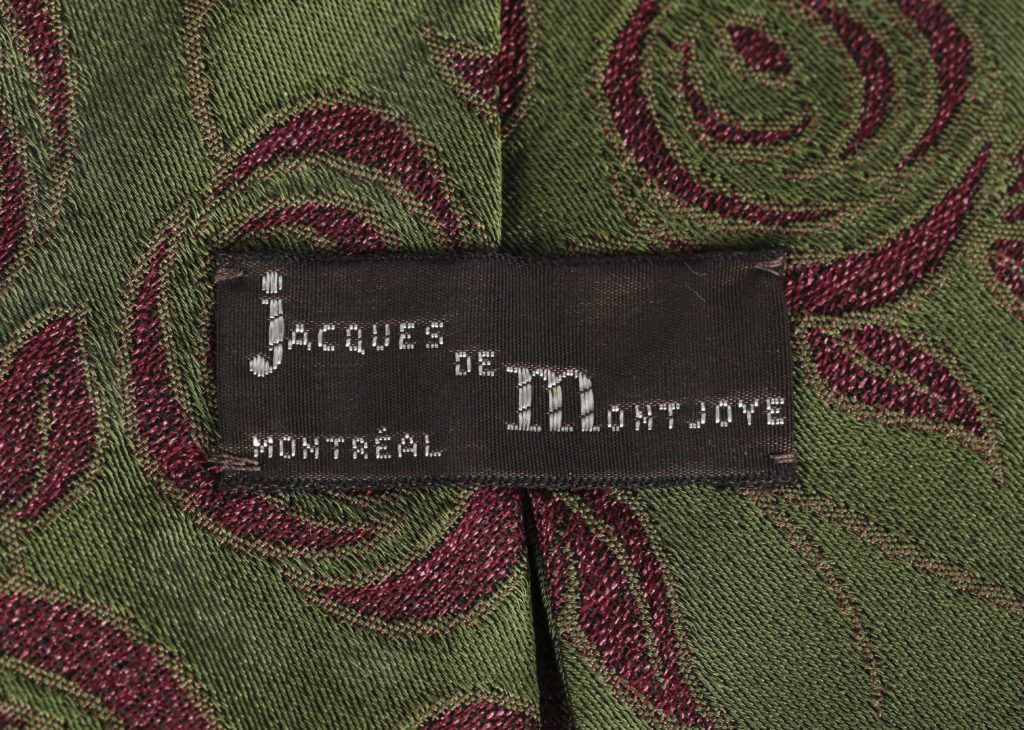
Marc Cognac, Jacques de Montjoye in workshop, 1959. Gift of Jacques de Montjoye, M2015.34.2.26 © McCord Museum
Recognized as a very talented artist, Jacques de Montjoye studied art in Paris with Paul Colin, a decorative painter famous for his posters, and then attended the École de la Chambre Syndicale de la Couture Parisienne. He began his career in fashion as a designer-stylist at Raphael in Paris, where his drawings of the latest trends were regularly published in newspapers. Immigrating to Canada in 1949, he began by designing collections for a sportswear manufacturer. When he began a solo career as a couturier, he met Marie-France Rousseau (Marie-France de Paris), a Belgian-born couturier. Together, they came up with the idea of creating the Association of Canadian Couturiers.
The designers group was officially founded in 1954, with Raoul-Jean Fouré as president.
Jacques de Montjoye took part in the Association of Canadian Couturiers’ major events, including its first group fashion show, presented at Montreal’s Ritz-Carlton hotel and the Pierre Hotel in New York City in 1954.
With the support of Canadian textile companies like Dupont Canada and Dominion Textile, who supplied the fabric, the promotional event drew attention to both the couturiers’ collections and Canadian fabrics. After the Association’s founding, Jacques de Montjoye worked with Raoul-Jean Fouré from 1956 to 1963. At that time, couturiers would not only dress women from head to toe, they also offered advice on how they should wear their clothing. With this in mind, Jacques de Montjoye was a regular guest on the Radio-Canada show L’éternel féminin in the early 1960s and wrote a book, Savoir s’habiller, published by Éditions du Jour in 1966.
FASHIONING EXPO 67 • Jacques de Montjoye

Jacques de Montjoye, interview conducted for Fashioning Expo 67 exhibition, November 2016 © McCord Museum
Jacques de Montjoye’s collections, created initially just for women and then for men as well, were presented at big fashion shows held in Montreal and across Canada, from 1963 to 1972.
At an Association of Canadian Couturiers fashion show held at Expo 67, in front of dignitaries from around the world, he presented a very provocative collection of four symbolic dresses.
One of his creations openly denounced the United States’ intervention in Vietnam, while another dress, entitled Mon pays c’est l’hiver, was an homage to Gilles Vigneault.
In 1964, the couturier opened a boutique on Crescent Street where he sold antiques and clothing he had created. He moved his business to 2070 Crescent Street in 1967, where he launched his first menswear collection in 1968. In 1970, Claude Girard completely remodelled and updated the store with mirrors and vibrant colours. During this period, Jacques de Montjoye created uniforms for the hostesses and guides at the Canada Pavilion of the 1970 World Exposition in Osaka, Japan, the employees of Maison Radio-Canada, and the Quebec government, as well as theatre and ballet costumes.
In the early 1970s, after 25 years in the fashion industry, Jacques de Montjoye became an instructor at the Collège Marie-Victorin school of fashion. There he shared his knowledge with numerous students who, under his tutelage, learned the basics of the profession and were spurred by his creative talents. Among the young designers inspired by his teaching were Louise Vincent and Marcel Dénommé, who went on to found the renowned Dénommé Vincent brand, and Philippe Dubuc. In addition to teaching fashion design, Jacques de Montjoye worked on program development at the Collège Marie-Victorin fashion school until 1990; he was also in charge of the school’s external relations until 1985. In the summer of 1988, at the request of the Peruvian Industrial Association of Clothing Manufacturers, he set up a fashion design course in Lima under the auspices of CESO (Canadian Executive Services Organization).
Several years later, he did the same thing in Cartagena, Columbia, when his interest in Latin American culture led him to split his time between Quebec and Latin America for several years.
He also created stage costumes for the Bogotá modern dance company, Deuxalamori.
Jacques de Montjoye’s career was characterized by diversity and a keen artistic sense. A confident fashion illustrator, he created lively, delicate sketches that elegantly showed off the clothing. As a couturier, he was less comfortable with the regimented concept of seasonal collections and more at ease breaking new ground. His original views, with regard to both fashion and society, can be seen in many of his achievements. Although his tunics for men in the early 1970s did not achieve the hoped-for commercial success, they nonetheless captured the public imagination and enhanced Montreal’s image as a city of fashion and creativity. Some of his menswear , his concept dress Mon pays c’est l’hiver, as well as his archives are in the collection of the McCord Museum.
Sources
Charest, Nicole. “Des robes pleines d’idées”, Perspectives, 18, 6 May 1967, p. 34.
“Deux mondes se rejoignent : la mode et le “show-biz””, La Presse, 10 October 1968, p. 40.
“Fashion Shows Popular: Different Approach Is Key”, The Gazette, 23 September 1964, p. 19.
“Hommes nouveaux”, Perspectives dimanche, 27 September 1970, p. 18-19.
“Jacques de Montjoye : Souplesse, fluidité, allure, gaieté”, Photo Journal, 1st to 8th of June 1963, p. 38.
Montjoye, Jacques de. Savoir s’habiller, Montréal, Éditions du Jour, 1966, 132 p..
“Un couturier engagé”, Sept-Jours, 1 July 1967, p. 32-33.
Publication date
01/10/2004
Writing
Françoise Dulac, Dicomode
Share
DownloadRecommended entries
© MCCORD STEWART MUSEUM 2024




